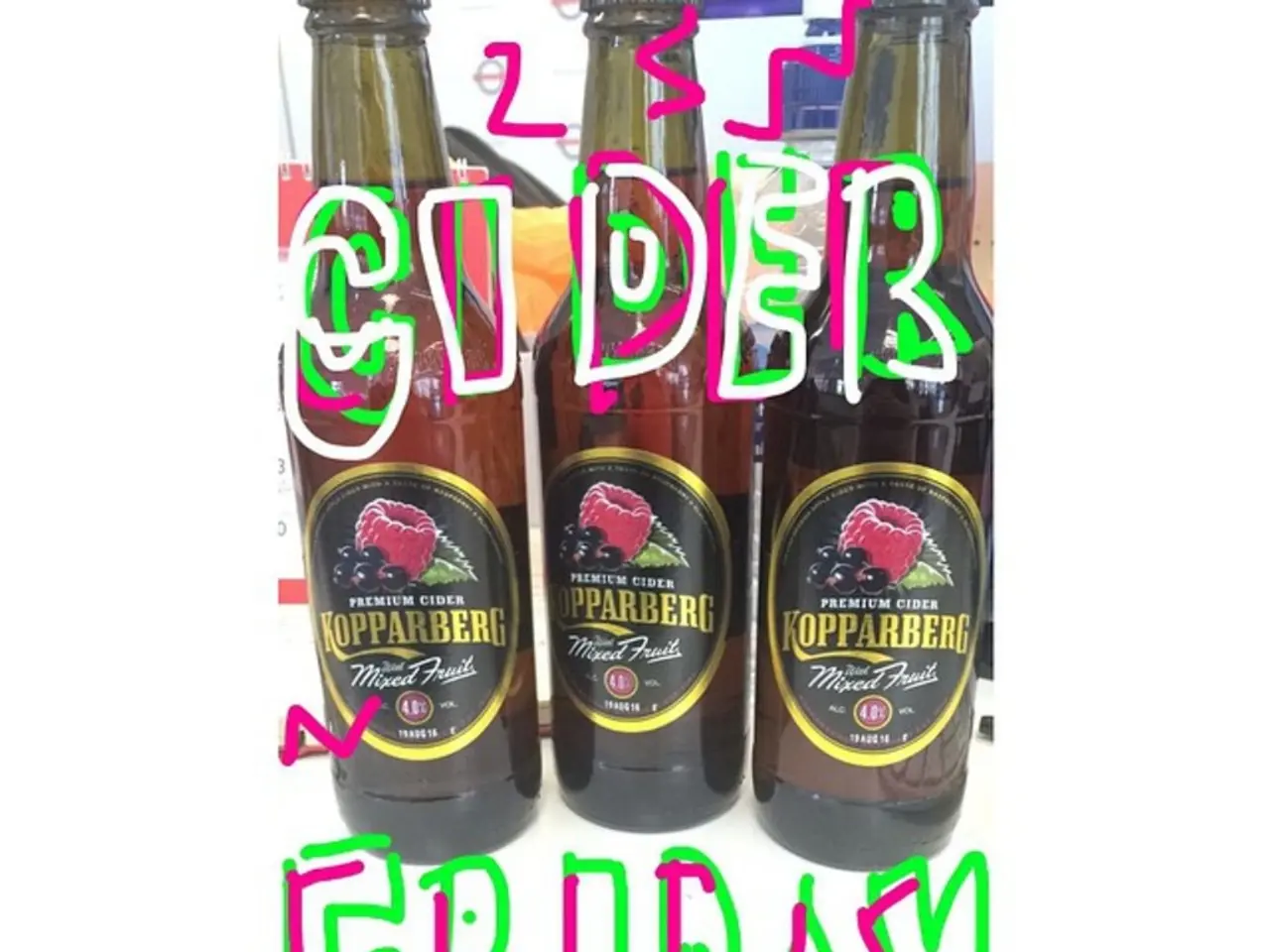Kuban experiences an elevated alcohol production rate, up by 11%
In an unexpected turn of events, alcohol production in Kuban, a region known for its agricultural prowess, has seen a significant increase compared to the same period in 2024, despite a decrease in sales and consumption.
According to recent reports, enterprises in Kuban produced 771.5 million liters of alcoholic products in the first seven months of this year. However, the sales volume in retail outlets during the reporting period stood at 202 million liters, a 9.2% decrease compared to the previous year.
Roman Kurinnoy, head of the regional department of consumer sphere and alcohol market regulation, acknowledged the trend of decrease in alcohol consumption in the region. The sales of strong drinks decreased by 4%, still wines saw a decrease of 17%, and sparkling wines experienced a decline of 11%. Beer sales also dipped by 9.2%.
Interestingly, the sales decrease in strong drinks, sparkling wines, still wines, and beer contrasts with a slight increase in the consumption of cider, perry, and mead. Despite no specific data being provided for the increase in these beverages, the consumption of cider, perry, and mead has slightly increased.
The rise in alcohol production in Kuban, therefore, may not necessarily reflect a rise in local consumption trends. Factors such as growth in artisanal and illicit alcohol production and sales, which may inflate production figures but not correspond with legal retail consumption declines, could be contributing to this discrepancy.
Additionally, possible production increases aimed at export or redistribution outside local consumption trends could also be a factor. The complex regional alcohol market dynamics in Kuban, where consumption decreases per capita may coexist with overall production increases, further complicate the picture.
These findings are supported by raids and investigations in the Kuban region, which uncovered the distribution of artisanal alcohol sold as homemade but actually produced illicitly, suggesting that some alcohol production operates outside formal statistics and emphasizes local production increases that may not align with legal consumption declines.
While the exact reasons behind the increase in alcohol production in Kuban remain unclear, the trends in the sales structure of alcoholic beverages provide a plausible explanation for the seeming discrepancy. The sales volume is 24.5 million liters less than in 2024, underscoring the shift in consumer preferences towards certain beverage categories.
This information does not directly relate to the proposed age increase for buying alcohol in Russia. As the situation evolves, it will be interesting to see how these trends continue to unfold in the Kuban region and beyond.
[1] Source [2] Source [3] Source
The increase in alcohol production in Kuban could possibly stem from growth in artisanal and illicit alcohol production, which may not be in line with declining legal retail consumption figures. This discrepancy might be influenced by the production of alcohol aimed for export or redistribution outside local consumption trends.
The significant increase in production of alcoholic products in Kuban, according to recent reports, does not necessarily correspond with a rise in local consumption trends due to factors like artisanal and illicit alcohol production and sales, and potential production increases for distribution beyond the region.




